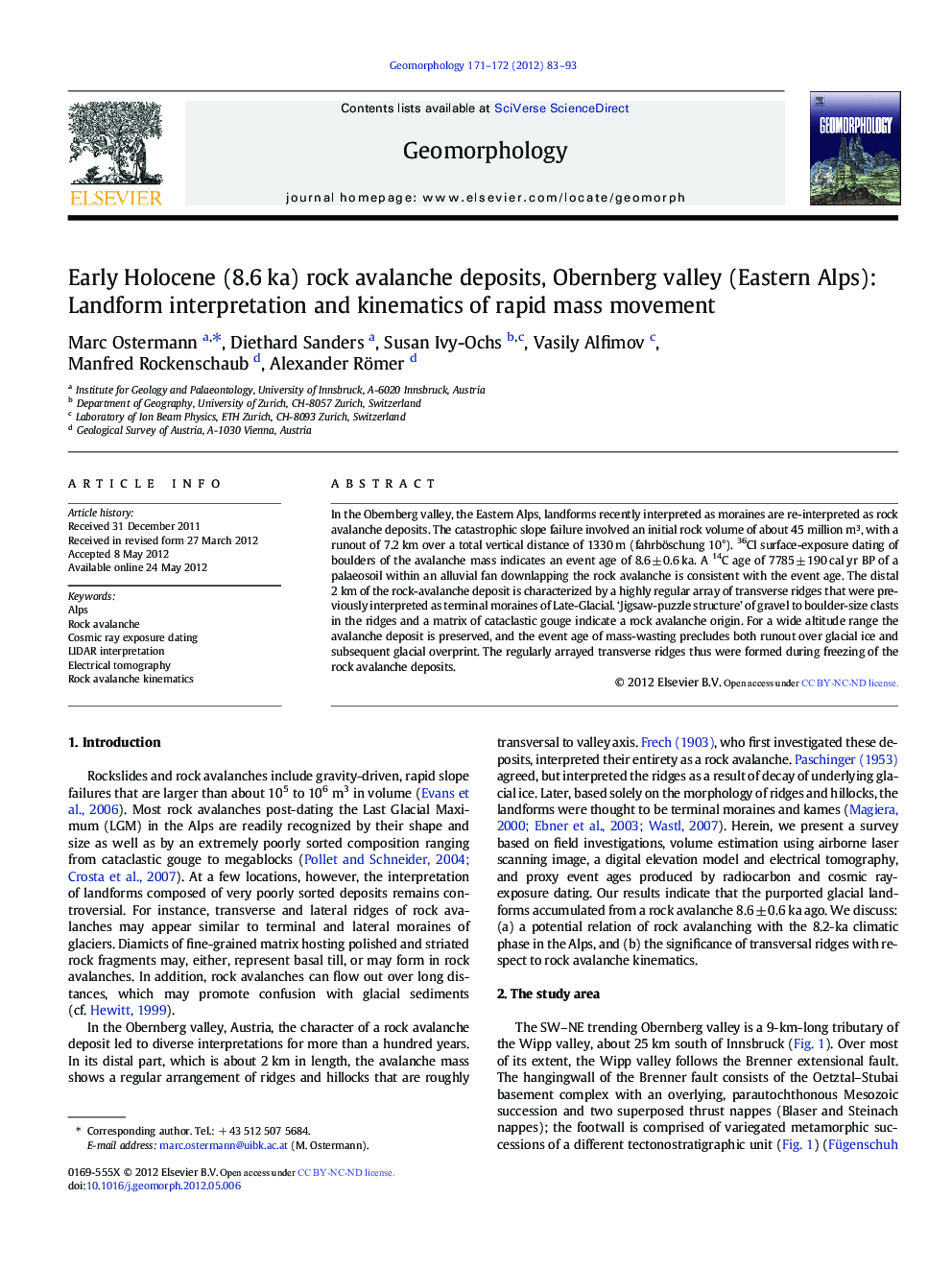| Article ID | Journal | Published Year | Pages | File Type |
|---|---|---|---|---|
| 6432857 | Geomorphology | 2012 | 11 Pages |
In the Obernberg valley, the Eastern Alps, landforms recently interpreted as moraines are re-interpreted as rock avalanche deposits. The catastrophic slope failure involved an initial rock volume of about 45 million m³, with a runout of 7.2 km over a total vertical distance of 1330 m (fahrböschung 10°). 36Cl surface-exposure dating of boulders of the avalanche mass indicates an event age of 8.6 ± 0.6 ka. A 14C age of 7785 ± 190 cal yr BP of a palaeosoil within an alluvial fan downlapping the rock avalanche is consistent with the event age. The distal 2 km of the rock-avalanche deposit is characterized by a highly regular array of transverse ridges that were previously interpreted as terminal moraines of Late-Glacial. 'Jigsaw-puzzle structure' of gravel to boulder-size clasts in the ridges and a matrix of cataclastic gouge indicate a rock avalanche origin. For a wide altitude range the avalanche deposit is preserved, and the event age of mass-wasting precludes both runout over glacial ice and subsequent glacial overprint. The regularly arrayed transverse ridges thus were formed during freezing of the rock avalanche deposits.
⺠Deposits of purported glacial origin have been re-interpreted as rock avalanche. ⺠The age of the rock avalanche is dated to 8.6 ± 0.6 ka. ⺠Regularly-spaced transversal ridges record mechanic waves in the rock avalanche.
